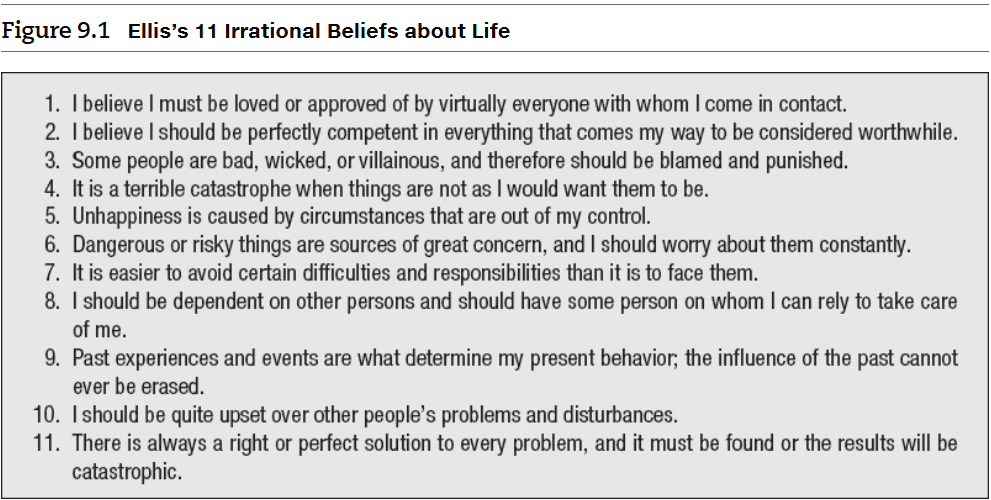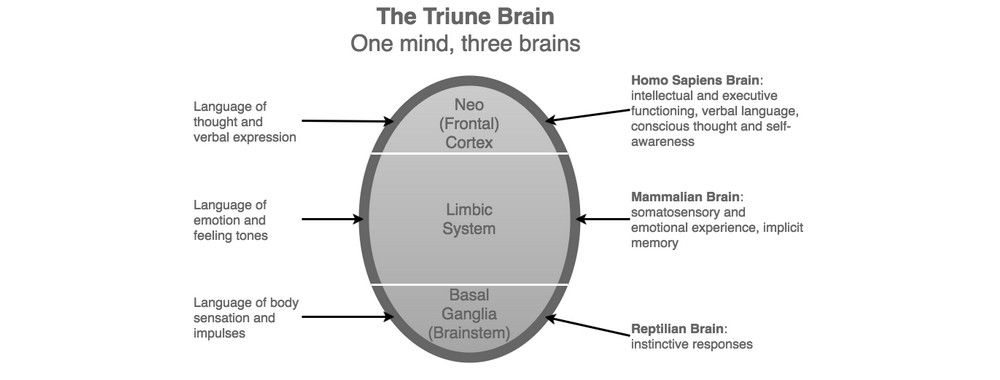Jungian analysts have called it the “swampland of the soul”. Other psychotherapy writers have observed how it originally served to keep us safe; the tendency to shame has been a universal one in which our desire to hide our flaws from others has saved us from being kicked out of the group (the society), which evolutionarily would have meant death (Sholl, 2013). So which is it? Is shame totally pathological, or is it ever helpful to us? And how shall we deal with it in the therapy session, especially when we are faced with a highly self-critical or otherwise shame-prone client?
In a recent blog post we defined shame and provided examples of it, differentiating it from similar emotions. In this follow-up article, we identify the signs and symptoms that a client is experiencing shame, review the dynamics and states of mind relevant to it, and explore ways to build shame resilience – a capacity to deal with potentially shame-triggering incidents – in clients.
How you can identify it in the therapy room
First, let’s make sure that you are, indeed, able to spot this elusive and dark emotion. As we noted in the earlier piece, the salient characteristic of shame is that, paradoxically, it is hidden. People can experience a deep-seated shame for years that even close associates do not recognise. So how, on perhaps only a few minutes of therapeutic association, do we? The first complication of many on this topic is that shame is ubiquitous in the therapy room. This is true for three reasons: (1) nearly all clients will be experiencing some form of it; (2) clients are also likely to feel shamed merely because of the stigma associated with seeking mental health help; and (3) finally, we as therapists must acknowledge that we have our own places of shame, which in the exchange of transferences that is psychotherapy, inevitably manifest in our interactions with clients.
Physical and emotional symptoms of shame
Dearing and Tangney (2011), in drawing together the threads of multiple master clinicians’ observations on the topic, noted that therapists consistently commented on the physical and/or emotional withdrawal of clients experiencing shame. This could be seen in decreased eye contact, slumped or rigid posture, avoidance of “here and now” material, freezing, stammering, tightened voice, self-deprecating comments possibly expanding into hilarious monologues, and a micro-flash of irritation before apology for missing a session or failing to do an assigned homework. Downcast eyes, squirming in the seat, laughter covering embarrassment, and indications that a topic is somehow degrading were all nominated as signs of shame. Some therapists noted that their shamed clients tended to go blank; manifest submissive, crouched body postures; avoid topics (as in talking “around” them); become anxious or angry; or directly refuse to divulge relevant clinical material (Dearing & Tangney, 2011).
The “hidden” demonstrations of shame
As obvious as the above signs would seem to be, a common observation is that shame is easily overlooked in the therapy room. It is an emotion that clients wish to hide because they feel ashamed of having shame, and we as therapists may collude with that, partly because of our own areas of felt shame. Beyond that, though, client shame is frequently disguised by other emotions: anger and rage, envy, contempt, and expressions of grandiosity, as clients “wear” several subtypes of narcissism in order to hide their vulnerable, shamed self. Paralinguistic cues can include confusion of thought, hesitation, soft speech, mumbling, silence, long pauses, rapid speech, or tensely laughed words. Therapists not trained to recognise it can easily miss these many, more hidden, faces of shame (Dearing & Tangney, 2011).
Shame-related states of mind in session
When in a typical shameful state of mind, an individual has a sense of an exposed, vulnerable, devalued self being scrutinised and found wanting in the eyes of a devaluing other. Acute shame may be experienced as an overwhelming pang of secret discomfort associated with communication that explicitly or implicitly conveys themes of inferiority. Extremely shame-prone clients suffer from persistent, oppressive appraisal processes in which all interactions (including those with you in session) are rigidly assessed in accord with the degree of perceived criticism, judgment, or humiliation experienced. This has been likened to a computer application program which, whether running inconspicuously in the background or more saliently in the foreground, is nevertheless always present at any given moment, never completely disengaged. It can be triggered into the foreground (primary operation) by myriad interpersonal events or by internal processes such as memories, fantasies, and reactions to internal states of arousal, such as sexual excitement, rage, or even exhibitionistic urges (Zaslav, 1998).
The defences a client chooses to engage as a result of the shame may vary widely. Narcissistic clients, for example, may ward off shameful schemas about self through grandiose, inflated self-regard in the (imagined) presence of an admiring audience. But upon perceiving a lack of sufficient support or attention from the psychotherapist, the same narcissist may experience other shame-related states, such as painful emptiness or of being a “nothing”. Volatile expressions of anger can result for shame-prone clients experiencing bitter, resentful feelings of being unappreciated or even humiliated; these the client may perceive as “self-righteous rage”. Others defend against shame through paranoid states in which others are seen as tormenting or accusing the self. For still other clients, envious states or episodes of blaming self or others manifest. How can you as therapist discern these states of mind? Zaslav (1998) suggests that psychotherapists are apt to enter complementary states of mind in which shame-related themes dominate. Thus, tapping into your own feelings in the moment will provide important clues to the client’s state of mind. Note that the client may present their guilty self (guilt being an often adaptive emotion in which we experience doing something bad rather than being bad), but a shamed self is not likely to appear directly, as clients go to frantic lengths to avoid experiencing it; by its nature, it is hidden even from the client (Zaslav, 1998).
Finally, upon entering a shameful state, many clients experience a transient inability to think, referred to as “cognitive shock” (Zaslav, 1998). Thus, while a psychotherapy session may work well for guilt, which can be expressed, processed, and expiated, the sense of vulnerability and exposure that goes with shame is almost always accompanied by a direct avoidance of communication about it, and this is compounded by states including disruptive imagery, cognitive disorganisation, and emotional dysregulation (Zaslav, 1998). All of this can trigger behaviour which conflicts with any prosocial, adaptive functions of shame (such as helping an individual to find his or her place in society), and instead leads the person to cut empathic ties to others.
Shame is rich in transferences
Along with all of this comes the challenge that shame – especially because it is so difficult for people to confront directly in themselves – is often repressed and thus projected outward, to the therapist and others. Much has been written about this aspect which is beyond the scope of this article, but note that, given the painful split between the devalued self and a devaluing other, defensive operations within the client are likely to result in the shame experience being projected onto or into the therapist (in projection and projective identification, respectively). This means that you as therapist may be made to feel about yourself as the client feels about him/herself. How do you know this is happening? Again, the information is located conveniently in your own body/emotions, when you begin to notice shifts in your own self-evaluation. You become, in essence, the “spokesperson” for the client’s poor self-esteem. The client may project inadequacy onto you, systematically and unconsciously undermining and devaluing your efforts, until you begin to doubt your own adequacy as a therapist. Feelings of weakness or deficiency are common in shame-based projections. Similarly, the client may reveal contemptuous or devaluing attitudes toward the therapist that can be linked in treatment to a disowned weak or defective self superimposed upon the psychotherapist. If this happens to you and you are able to tolerate the projections openly – without corresponding shameful retreat, you provide a powerful message to the client that it is safe to examine his or her internalisation of a devalued, incompetent self (Zaslav, 1998).
Finally, we note that a different form of transference/countertransference can occur when the client unconsciously pressures you as therapist to accept a disapproving stance toward him/her. In this case you function as a spokesperson for the client’s self-contempt. Once you understand this, it is easier to maintain a supportive stance, while encouraging exploration of those self-critical attitudes that the client generally puts onto him/herself (Zaslav, 1998).
Enhancing shame resilience in the therapy room
Dearing and Tangney (2011) integrate their master clinicians’ suggestions for how to work with shame in the therapy room through a framework with four aspects: accessing and acknowledging shame, relational validation, shame regulation, and transformation of shame. We look through that framework into suggestions we have unearthed for building shame resilience.
Accessing and acknowledging shame
Numerous authors make the point that shame draws much of its power from the shadows; when we bring it into the light of shared discussion, we disempower it. The saying is apt here that emotions (and shame is one of the darkest and most intense of emotions) are like breathing: they only cause trouble when obstructed (Sack, 2015). Thus, getting beyond shame means being able to share experiences of shame with trusted others. It means exposure to shame. We have emphasised throughout this article and the earlier one that people acting from shame-based instincts uniformly want to avoid looking at it, let alone talking about it. But deal with it they must; exposure to it can be like the graded exposure techniques used with individuals experiencing panic attacks and other forms of anxiety: first a little exposure to it, then gradually increasing amounts (LeJeune, 2016).
It is useful for clients to be able to recognise their triggers. Shame is sneaky; it attacks us where we are most vulnerable, or in other words, our insecurities “prime” us to feel shame in particular areas. The aspiring writer with the freshly-minted novel is more apt to feel shamed when someone points out how compelling another novelist is than when comments are made about someone else’s car. The overweight person who hears how beautiful another (very slender) person is may take that as a hint that he or she should lose the excess weight. Research suggests that a chief shame trigger for women is physical appearance, whereas for men it is the fear of being perceived as weak (Sack, 2015).
In therapy, the mere process of naming shame helps to differentiate it from similar emotions (such as humiliation, guilt, or embarrassment) and also can help the client to normalise it (i.e., pointing out that it is a universal human experience; we all have it at one time or another). The point is to “titrate the dose” of shame-naming so that the client is not overwhelmed, but confronts it little by little as he or she is ready to accept it. As this process occurs, the client comes to see that few, if any, experiences warrant the global “smearing” of the whole personality with the tar-brush that created the global negative self-attributions. Rather, in the logical light of day, most genuine flaws, setbacks, and transgressions are limited to particular areas – and the client can either resolve them or choose to view them more kindly (Dearing & Tangney, 2011; LeJeune, 2016).
Relational validation
Talking about the shame, as above – or rather, being heard around it – is a form of relational validation as well as a way of accessing shame. Empathy is the antidote to shame, so receiving it when telling a shame-generating story can help dissolve it. Especially because of the hidden nature of shame, we can tend to feel isolated in it. Authentic sharing – with vulnerability, to someone who responds empathetically – can build the therapeutic alliance in a therapy session, or strengthen a relationship outside of it. Yes, it can be anxiety-inducing to do this with high shame. As a therapist, note that many psychotherapy writers suggest that you actually use the term “shame”, but you may wish to wait until some relationship is built before using that word (Sholl, 2013; Dearing & Tangney, 2011).
Shame regulation
Along these lines, whatever you can do to help build self-compassion in the client makes it easier for the person to self-soothe, self-validate and regulate the shame. Thus, not only your words, but the timbre, pacing, and tone of your voice – how you say what you say – may influence clients cued to experience threat or disapproval. LeJeune’s research (2016) suggests that even engendering a sense of physical warmth in the therapy room (via a cup of tea, a blanket, or a cosy office) may induce a client to greater compassion for self and therefore greater capacity to self-regulate the shame.
Certainly, psychoeducation and guiding clients in experiences of loving-kindness (Metta) meditation and practices of mindful non-judgment are shown to positively impact a whole host of difficulties related to shame. One technique is to locate where the sensation of shame manifests in the body; let’s say it’s in the pit of the client’s stomach. The client then places a hand over that area (or alternatively, over the heart) and directs comforting, affirming energy to that part of the body. When a client has enhanced self-compassion, it makes it easier to be vulnerable and engage the world from a place of worthiness, thus regulating shame, so it is a full feedback loop (Sholl, 2013).
Tied to helping the client regulate his or her shame is the capacity in us as therapists to be able to recognise and then normalise our own places of shame. Let us say this strongly: it is normal to feel shame as a therapist! We spoke before about shame being put onto or into us by the client via projection or projective identification. Beyond that, we are human, too, and may experience shame from previous experiences completely unrelated to the client. LeJeune’s Number One scientifically-based recommendation for dealing with shame is to “Love your own self-doubt; it makes you a better therapist” (2016). At least, being aware of our own shame and learning about it can help us to model self-compassion and eventual shame regulation for our clients (LeJeune, 2016; Dearing & Tangney, 2011).
Transformation of shame
Finally, we come to the question of how we can change a problematic emotional experience – that of shame – into a more adaptive, empowering, and meaningful emotion that can serve as a resource. One powerful way is to transform shame into guilt. We have differentiated between shame (“I am bad”) and guilt (“I have done something bad”). If we are inherently wrong or bad, there is no hope. But if we have done something wrong, we have the opportunity to make reparation: to apologise, to compensate, to redress whatever wrong we have somehow done. Sometimes it is only necessary to educate clients as to the difference between “being bad” and “doing bad”. Some forms of treatment already support this transformation. Alcoholics Anonymous, for example, encourages members to separate character flaws from their core selves (Step 4) and make amends for what they have done wrong during their addictions (Steps 8 and 9), thus moving from shame to guilt. Taking this step is at least implicit, if not explicit, in therapies such as CBT and REBT. Many success-oriented therapies, such as narrative therapy and solution-focused therapy, ask clients to look for exceptions, so shame-based perfectionists have the opportunity to challenge excessively high standards and others’ evaluations of the self.
In some cases, such as with sexual abuse, the client had no responsibility for the shame-engendering experience and so the therapeutic goal is not the change of focus from shame to guilt. Rather, it is about appropriately externalising the blame back onto the abuser: putting where it belongs. As such clients construct new meaning for long-standing wounds, their shame may shift to anger or sadness. These emotions can be growth-producing in that they point to adaptive actions appropriate to the situation: for example, reaching out to connect to others in sadness and using anger to assert one’s right to life one’s own life without shame (Dearing & Tangney, 2011).
Summary
Much can be written about this intensely painful, complex, and often misunderstood topic of shame. In this article we have looked into how you can identify it in your therapy room, what the typical shame-related states of mind tend to be, and the kinds of transferences that typically pop up in session. We have suggested a four-component framework for treating it which includes accessing and acknowledging it, deepening relational validation, helping the client to regulate the shame, and eventually transforming the shame into other, more adaptive emotions. Paradoxically, the ultimate arbiter of your effectiveness in dealing with client shame is your willingness to be with your own shame.
References
- Dearing, R.L., & Tangney, J.P., Eds. (2011). Working with shame in the therapy hour: Summary and integration. Shame in the therapy hour. Washington, D.C.: APA Books.
- LeJeune, J. (2016). 20 science-based recommendations for therapy with highly self-critical or shame-prone clients. ACT with compassion. Retrieved on 17 May, 2018, from: Hyperlink.
- Sack, D. (2015). 5 ways to silence shame. Psychology Today. Retrieved on 17 May, 2018, from: Hyperlink.
- Sholl, J. (2013). Shutting shame down. Experience Life. Retrieved on 17 May, 2018, from: Hyperlink.
- Zaslav, M. R. (1998). Shame-related states of mind in psychotherapy. J Psychother Pract Res. 1998 Spring; 7(2), 154-166.


